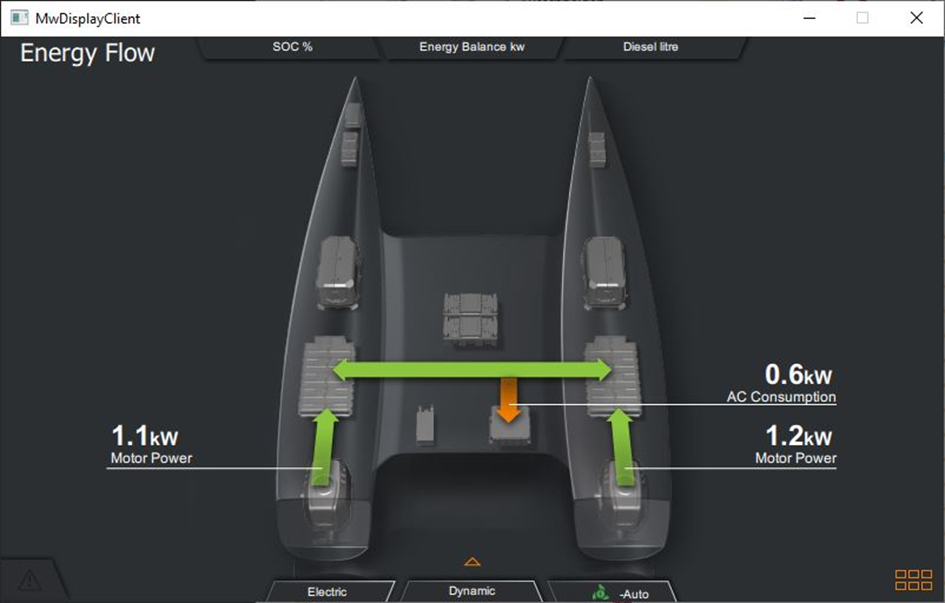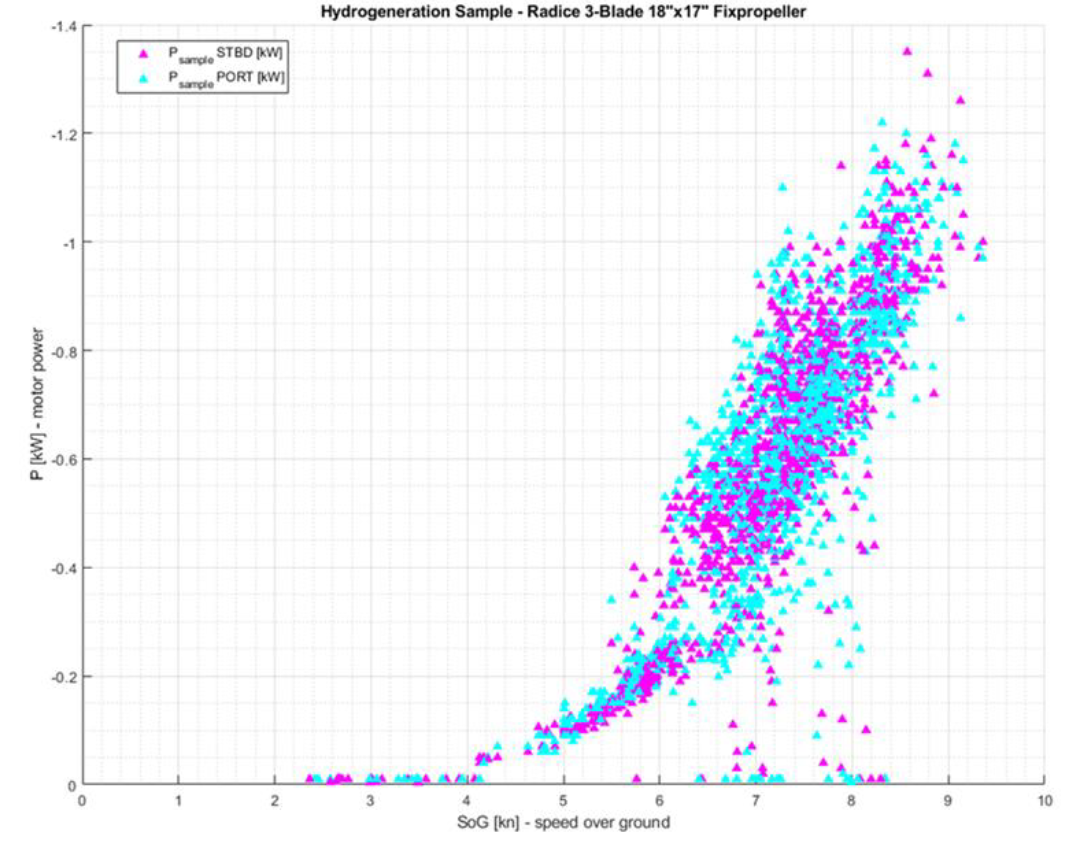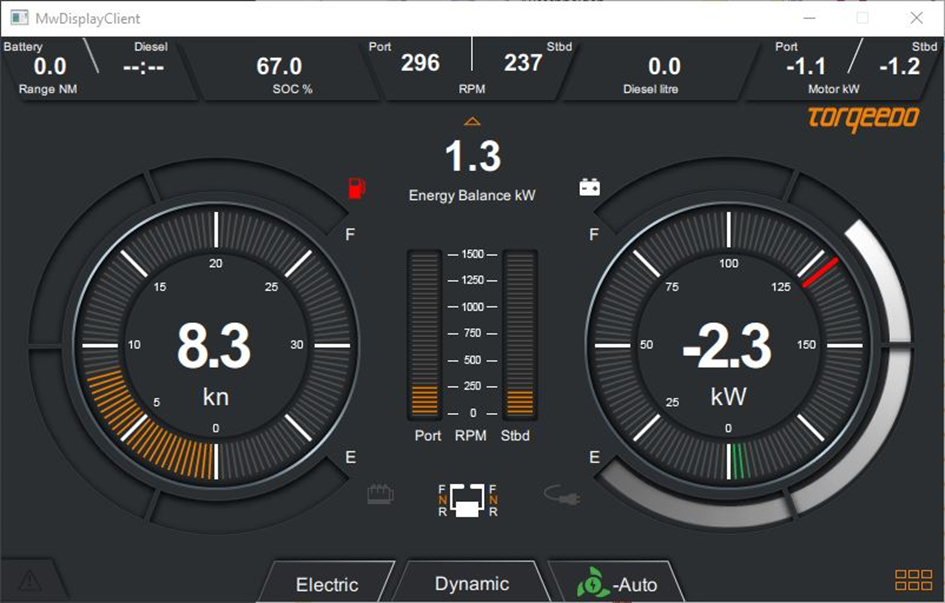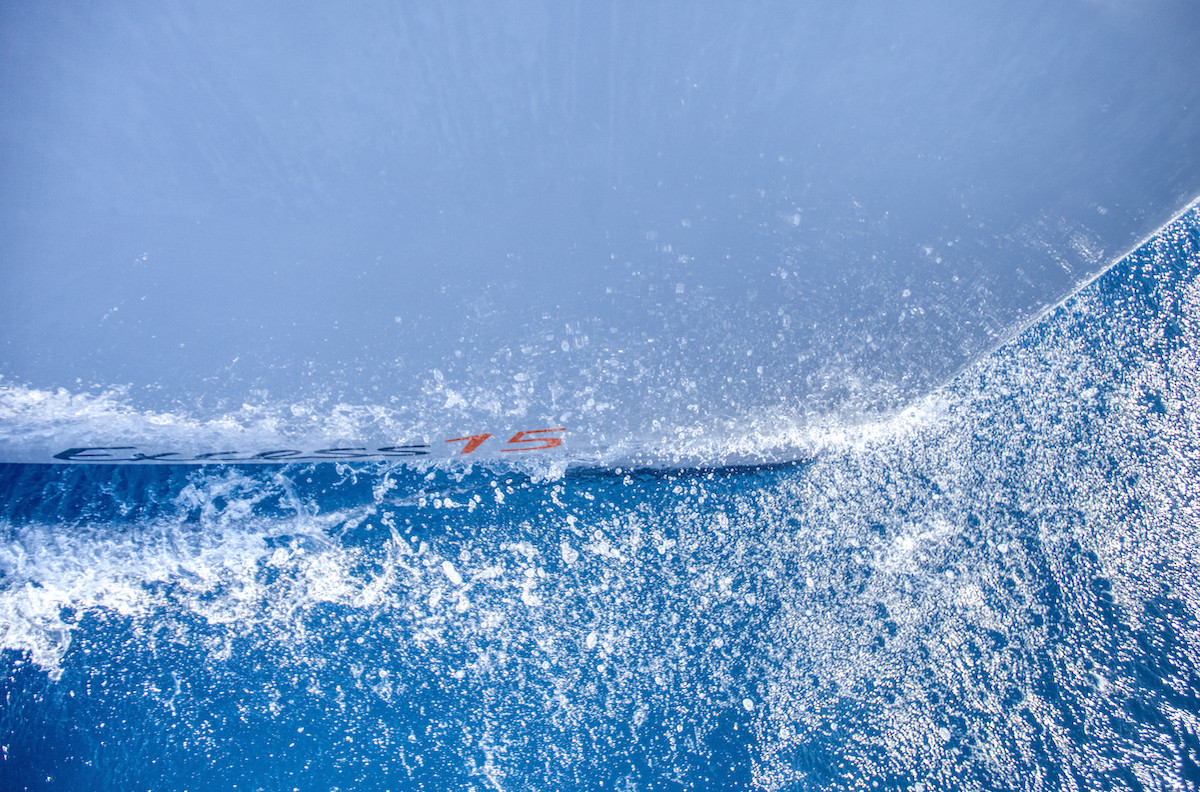E’LAB #5 HYDROGENERATION

Do you remember back in September, when the boat shows started up again? We began a two-month experimental cruise in the western Mediterranean aboard our Excess 15 E'Lab. This boat is a hybrid electric version of our Excess 15 catamaran, designed in close collaboration with the German motor manufacturer Torqeedo. Some of you had the opportunity to go aboard, or even do a few miles out on the water. Our Excess prototype is equipped with two Deep Blue 50kW motors, a lithium battery bank, generators, and an automatic energy management interface developed by the Bavarian company. This ingenious system is giving everyone on the Excess team the opportunity to discuss the hydro-generation process and to share their experiences across the entire Excess community.

What exactly is hydrogeneration?
It is a function that allows you to generate electricity when going along under sail, just like a dynamo would on a bicycle. The catamaran’s electric propulsion system is effectively used “in reverse” to convert the boatspeed into electricity. When sailing, the energy exerted by the movement of the water on the propellers is converted into electricity by the two electric motors. The power of the wind can not only be converted into propulsion power, but also be used to generate electricity by recovering the kinetic energy of the water flow. This energy is used to turn the propeller to generate energy. Hydro-generation is particularly well suited to blue water cruising catamarans such as the Excess 15, which generate sufficient kinetic energy and can cover long distances when passage-making.

Conclusions from our long-term test
“During the experimental cruise aboard the Excess 15 E'Lab, we got to try out several propeller configurations and undertake various hydro-generation trials. Under sail in open water, in ideal conditions with a steady 15 to 20 knots of wind on the beam, the catamaran glided along wonderfully, and I was surprised, shocked even, to see that the boat was producing about 75% of the energy being used daily, i.e., 18 kilowatts of the 25 kilowatts used during the period”, explains Thibault. On this trip, there weren’t 8 people on board, just the skipper and one crewmember. All the refrigerators were on, the electronics were switched on (notably, the autopilot) and the pumps and water heaters for the shower were used. But beware: “These were ideal conditions with only two people on board, and non-stop sailing, allowing for a lot of hydro-generation,” warns Hervé, “Users and owners of catamarans will rarely encounter these conditions. We can hydro-generate a lot, but it does incur a certain loss of boatspeed” he adds. Between August and November 2021, the skipper of the Excess 15 E'Lab was able to carry out several tests, concluding that the average loss of speed in hydro-generation mode was one knot.

The figures will vary depending on the type of use
It is evident that the energy on board also depends on the boater’s use of the catamaran. By sailing as much as possible, ideally over long distances, you optimize your energy consumption on board. “The positive aspect of hydro-generation is that it encourages you to only sail and not to move around under motor, as is often the case when on charter or simply heading to an anchorage with your family” says Thibault. In terms of energy production, each input has its own specificities. We know that wind generators work very well when we’re sailing upwind and that solar panels work at full capacity in fine weather. “Hydrogeneration is not THE sole solution, but it does contribute to covering part of the daily needs when cruising,” adds Hervé.
One of the major advantages of the Torqeedo system fitted to the Excess 15 E'Lab is that it manages the torque of the propeller to optimize its efficiency and generate a maximum of electricity according to the speed the boat is going. In addition, unlike externally mounted systems (such as the Watt and Sea, one of the most well-known today), the system is already integrated into the catamaran and doesn’t add any extra elements under the boat. Another advantage of the Torqeedo system is its user-friendliness. There is a graph that shows the energy flow in the same way as you would find on a hybrid or electric car like a Tesla, for example. The control panel is on a touch screen, and you just have to click on the motors or batteries to get more details or even choose whether to hydro-generate or not. Even for a “technophobe”, or someone who doesn’t have any real technical knowledge, it is easy to use!
And what about you? Are you ready to consider a hybrid solution?





Did you manage to estimate the drag generated by the propellers in generation mode. Compared to folding props of a regular diesel engine?
Is it a significant factor on a boat this size ?
The drag of the fixed propeller was about 1 knot when turning on the hydrogenation.
When cruising between 8 and 9 knots, and switching on the hydrogenation, we dropped to speeds between 7 and 8 knots.
Therefore we can say it generates more drag than a folding prop on a diesel engine. But it produces energy in return! Which I find pretty awesome!